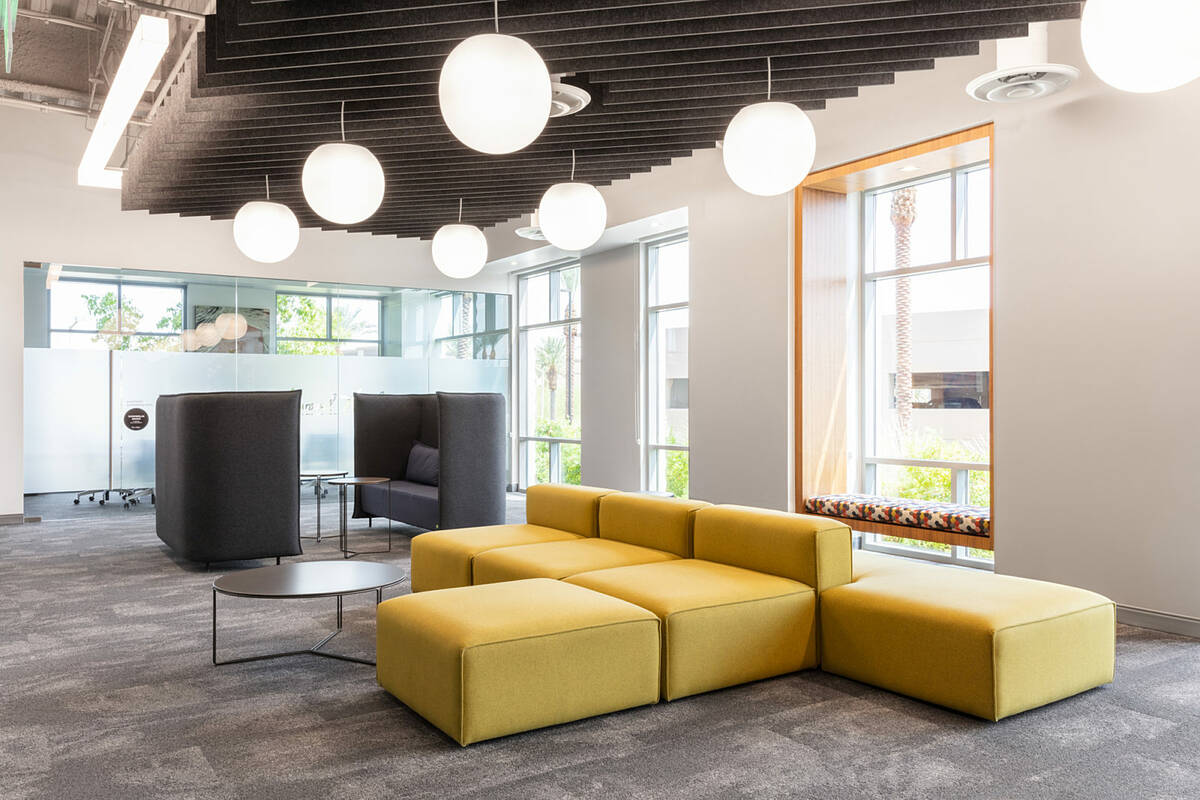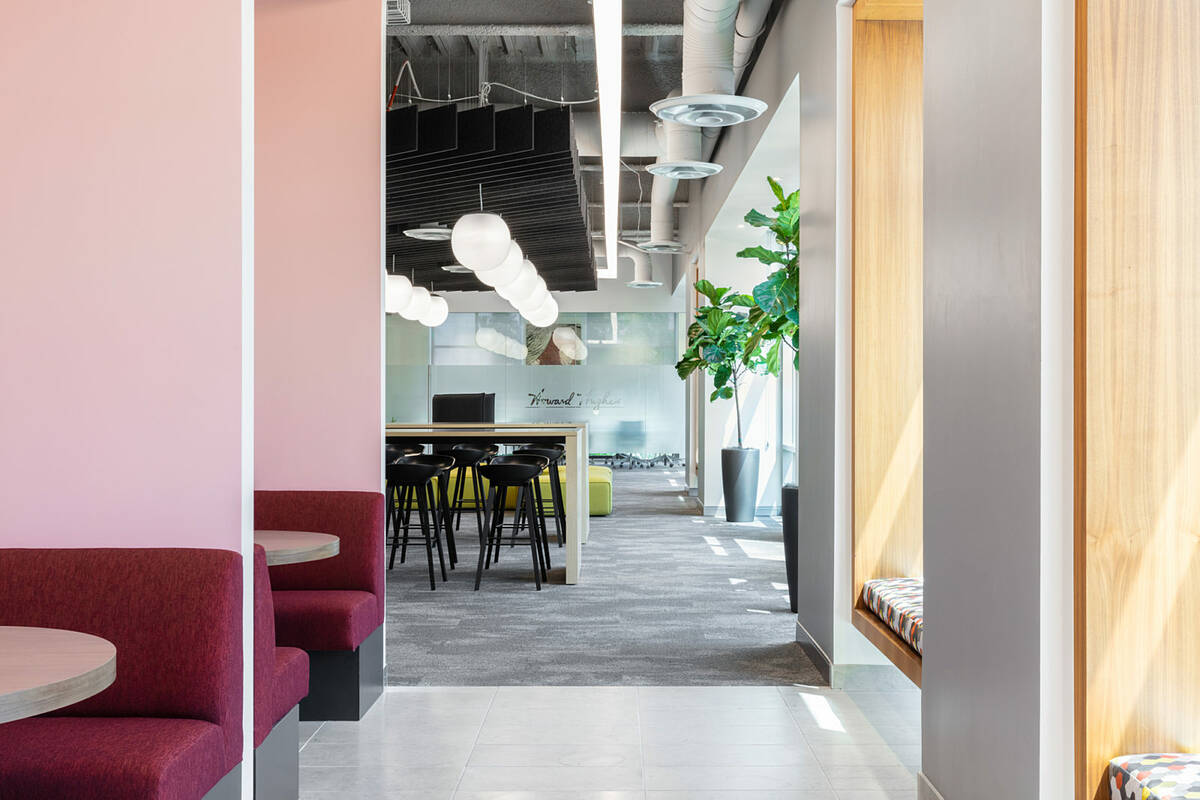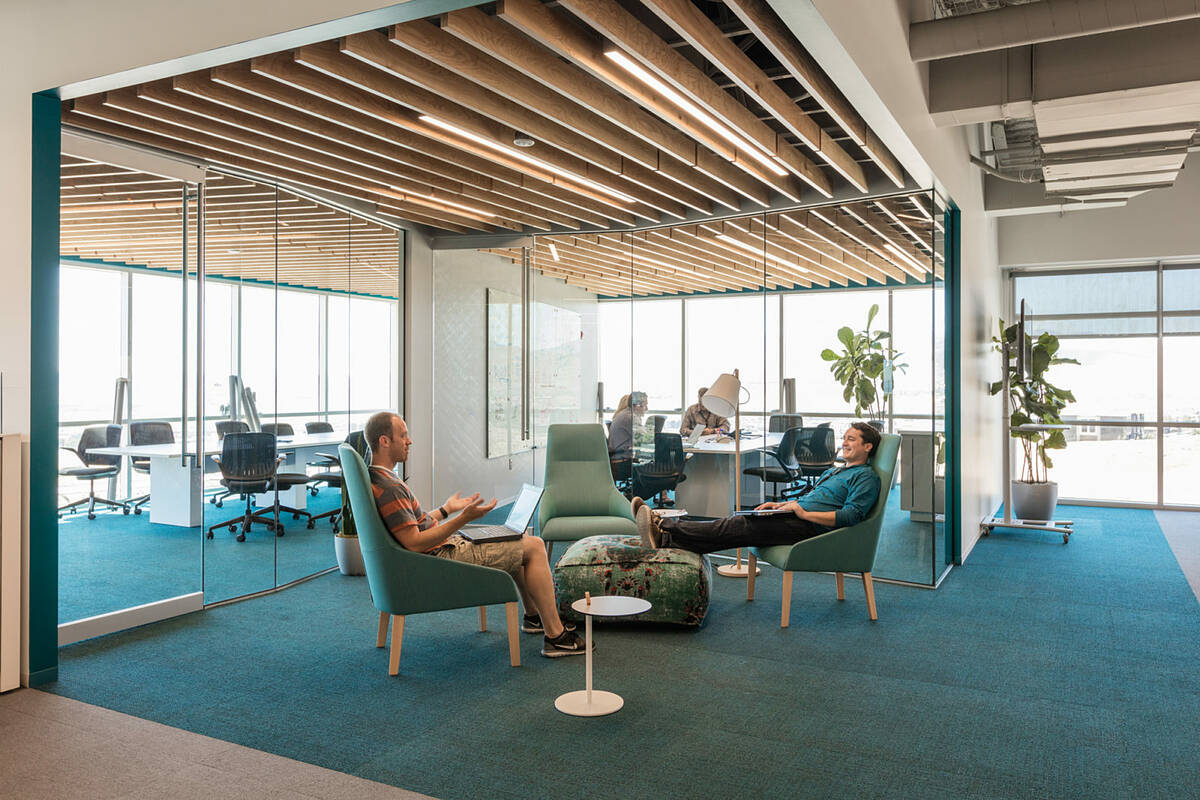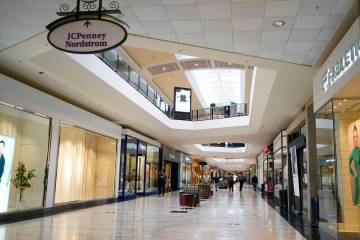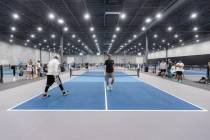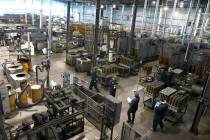Companies reconsider layouts to ease transition back to the office
White-collar workers have gone back and forth with plans to return to an in-person workday with each passing wave of the pandemic.
While some prophesied in 2020 that a home desk or kitchen table was the future office space, many industry experts say the reality is more diverse. Large companies are more likely to plan a return to the office, if they have not already done so. Others are looking to lease in new commercial builds across the valley.
“I really expected a huge drop-off in tenant improvements or office space,” said Kellie Wanbaugh, vice president of interior at Las Vegas-based architecture firm Ed Vance &Associates Architects. “While we have seen some of our clients telling us that there has been a reluctancy to return to the office for people that are working from home, they’re also finding that almost as many people are desperately excited to go back to the office.”
The key now to a return is flexibility, commercial real estate experts say.
Bringing workers back
Many office leaders intend to bring most or all of their staff back to the workplace full time. But doing so may take some enticement.
Gensler Research Institute, the research arm of the global architectural firm Gensler, found that during the pandemic 45 percent of workers preferred full-time remote work and an additional 36 percent preferred some level of hybrid work, according to a fall 2021 survey of about 2,300 U.S. office workers.
Cushman &Wakefield broker Dan Palmeri said many Las Vegas companies intend to have their employees return to the office but are not sure how. Employers, particularly large companies, say they desire a traditional approach to cooperative work in a face-to-face setting.
“I think the bigger the company, the more collaboration is important to folks,” Palmeri said. “The larger the tenant — especially the more nationally recognized the tenant — the more they’re used to using office space traditionally and are pushing that people come back to work. It’s more the mom and pops that don’t need to (return to an office) quite as much, or have figured out a way to make it work.”
Office leaders have considered different ways to lure employees back to their desks. Chris Dos Santos, office leader and interior designer for Gensler Las Vegas, said a major trend in office design is treating the office as a destination.
“Really creating a unique and special experience that the end users really can’t get at home working remotely,” Dos Santos said. “Achieving workspaces where people want to be is based on designing amazing human experiences that are worth the commute.”
Clients are creating more exciting break areas with games, expanding group seating and improving coffee options, while others go more extreme, offering hot lunches to employees. There are also services such as ezCater, an online platform connecting office staff with local restaurants and caterers that brands itself as “food for hybrid work.”
Wellness-centered ideas
Another trend to create a more welcoming environment is based on wellness, said Wanbaugh of EV&A Architects.
There’s been a shift to keep spaces for nursing mothers, often called “mother’s rooms,” open for anyone in need of privacy.
“It’s where people who feel like they need to get away or step aside for a little bit, they’ll go use that room as well,” Wanbaugh said.
Wellness falls in line with Gensler’s research, Dos Santos said. The firm’s fall survey found ideal work environments for employees skewed toward privacy. When asked what would make them more comfortable returning, three-fourths of respondents ranked access to private spaces in the office as a priority.
To that point, Gensler designers incorporate more amenities that include quiet rooms, meditation rooms and biophilic spaces — incorporating nature into the room through outdoor spaces, windows or indoor plants.
Incorporating hybrid work
Companies are also keeping hybrid work in mind when planning office layouts.
Gensler Research Institute’s survey found that in an ideal “post-pandemic future,” 52 percent of office workers preferred a hybrid work model and 29 percent wanted a fully remote schedule.
That split has led to more experimentation in occupied workspaces, Dos Santos said. Clients may be more willing to try new layout strategies that fit the workforce coming to the office. Some even use employee liaisons to determine how workers feel about a return to the office and to “find the right balance” of private and open space.
At her own office, Dos Santos and employees are not yet required to come in. She estimates about half of the staff comes in throughout the week. Designers, for instance, are more likely to use the space in ways they can’t at home, like spreading out samples.
While open offices and hoteling workstations — unassigned seating — has been on the rise for years, the pandemic reinvigorated interest in the style, said Heather Bressler, Las Vegas market president and principal for interior design and commercial furniture dealer Henriksen Butler.
The firm has pushed the idea that “workers are shoppers” who want to decide where they can best focus on work on a given day.
For one Las Vegas-based client building an office in New Jersey, Bressler and her team are designing the office in zones. One area is set up with ergonomic lounge furniture that supports group work. There’s also a large break room, smaller meeting rooms and a “library zone” supporting solo work.
A layout like that in New Jersey can create a reduction in workstations that’s more about “work points” than traditional cubicles.
“Most of the reasons our customers and people are coming back to the office is to collaborate,” Bressler said. “Most of them are still comfortable doing that heads-down work from home when they need that focus or privacy or they’ve got a day for Zoom calls. That kind of work can be done from home. What can’t be done from home is collaboration and serendipitous encounters.”
McKenna Ross is a corps member with Report for America, a national service program that places journalists into local newsrooms. Contact her at mross@reviewjournal.com. Follow @mckenna_ross_ on Twitter.



